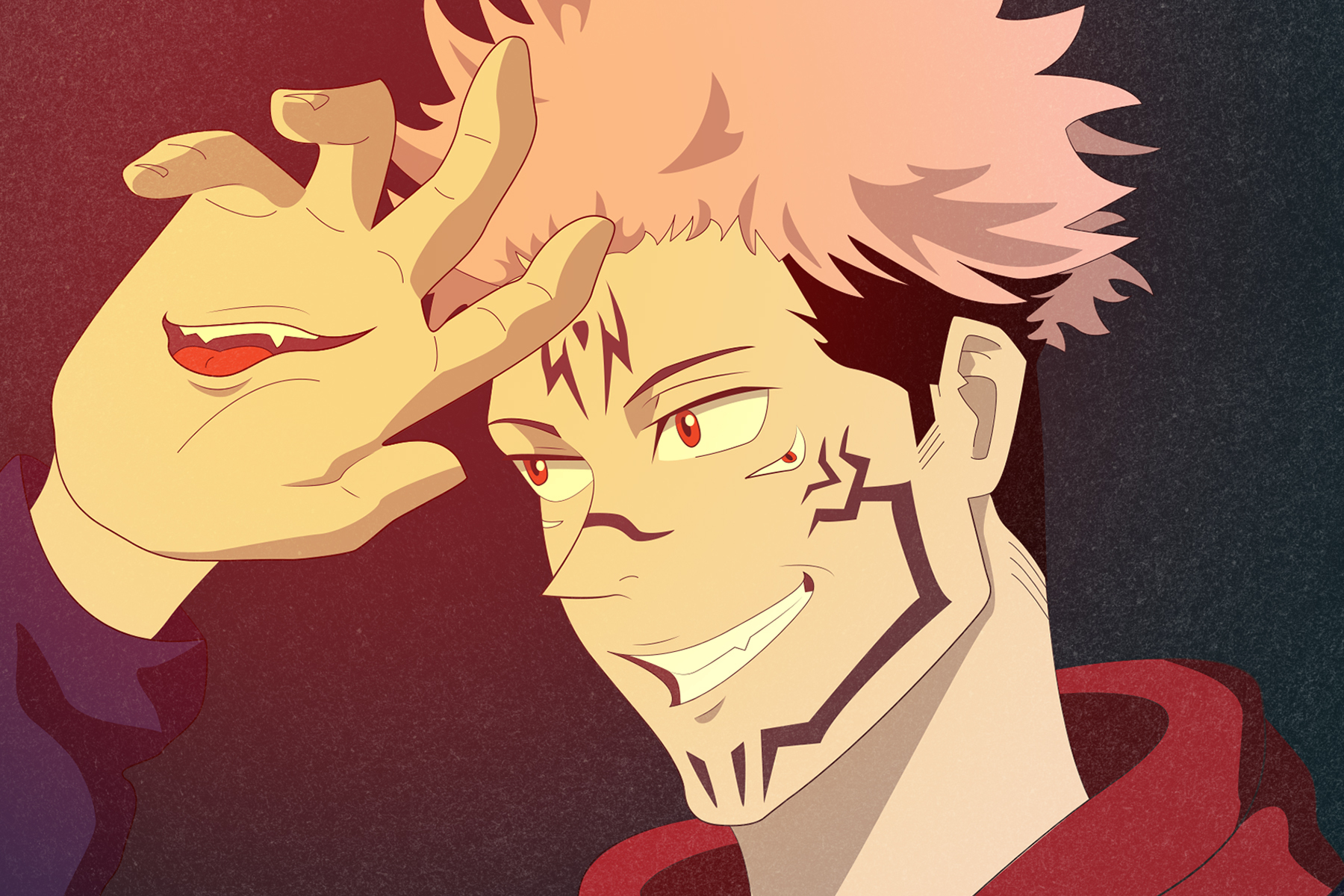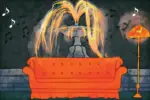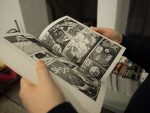“Jujutsu Kaisen” was not the first anime that I watched, but it was the first to show me a new side to shonen (“young boy”) anime as a medium for immersive, poignant storytelling. While marathoning the anime’s 24 episodes just last weekend, I realized that “Jujutsu Kaisen” truly deserves its title as Crunchyroll’s anime of the year.
“Jujutsu Kaisen,” or “JJK” as it is affectionately known, seems to be everywhere: blazing on news headlines, dominating Crunchyroll records, trending on Twitter — it’s even in raving reviews from friends and scattered throughout my social media explore pages. Polygon named “Jujutsu Kaisen” as a “revolutionary of the entire shonen anime genre,” IGN declared it the “next big thing in anime” and YouTube critic channels have flocked to knight “JJK” as the “peak shonen anime.”
For an anime as hyped as “JJK” was on the internet in the past year, you’d expect it to be overblown with anime fans everywhere hopping on the bandwagon. However, there’s a good reason as to why “Jujutsu Kaisen” was the most-watched anime in North America and in 70 other countries and territories around the world.
Simply put, “Jujutsu Kaisen” is everything — soul-wrenching images of loss, fist-pumping scenes of badassery, disquieting moments of body horror and humor that will wring an involuntary snort of laughter. The smooth animation, brisk storytelling and inventive art style all contribute to an experience that will leave you utterly absorbed.
For those who have yet to watch it and have been completely lost since the first word of this article, let me briefly explain what “Jujutsu Kaisen” is.
The Plot
“Jujutsu Kaisen” centers around Yuji Itadori, a supernaturally strong teenager who leads an ordinary life. When cursed spirits attack his classmates, Yuji makes a choice to save the people around him by swallowing the rotting finger of Ryomen Sukuna, the “King of Curses.”
Instead of immediately dying, in a one-in-a-million chance, Yuji becomes the vessel of Sukuna and is consequently sentenced to death by the jujutsu sorcery world. But before that happens, he’s tasked with finding and consuming the curse’s remaining fingers. The show then depicts the adventures of Yuji as he attends Tokyo Metropolitan Jujutsu Technical High School to learn how to fight curses with his fellow first-years, Megumi Fushiguro and Nobara Kugisaki.
The anime is based on a manga of the same name, created by Gege Akutami. The anime’s popularity and stellar ratings parallel the acclaim of the original manga — as of July, “Jujutsu Kaisen” is the highest-selling manga series of 2021, with over 27.8 million copies sold. It’s a rare case in media for anime to not just pay tribute to the original source but to match its success — how many times have movies been just as good as the books? The rhetorical answer: not many.
How “Jujutsu Kaisen” Deviates From the Shonen Genre
If the premise of a show focused on adventure, fighting and a young male hero sounds familiar, that’s because it shares many of the similar tropes of other popular shows in the shonen genre, such as “Hunter x Hunter,” “Dragon Ball,” “Bleach,” “Naruto,” “One Piece” and “Attack on Titan.”
These shows are characterized by action-packed, entertaining plots that may feature martial arts, robots, science fiction, sports, horror or supernatural elements. The usually male protagonists embark on a journey to better themselves, save the people around them or find their long-lost family. Along the way, they’ll realize their latent abilities, develop maturity and sacrifice themselves for the good of society, family and friends.
Yuri
As a series that caters to the young male demographic, it sure doesn’t feel that way. For one, instead of the protagonist bull-headedly persevering through the impossible and ignoring the advice of his friends, Yuji realizes very early on that he cannot save everyone, and he has no magical deus ex machina power to prevent the deaths of innocents. Death is the ever-present specter of jujutsu sorcerers, and all Yuji can do is help people die when they’re supposed to.
For instance, when Yuji concocts a naive plan to save everyone and still live in the fourth episode, he’s quickly proven wrong in the next episode by actually … dying — and being resurrected later on, of course. Yuji realizes that having willpower and determination doesn’t always work — that he actually has to get stronger and suffer death. It’s inspiring yet sobering.
Round Female Characters
“Jujutsu Kaisen” also takes the shonen trope that makes female and supporting characters relatively weak and dull and turns it on its head. Nobara Kugisaki, one-third of our main trio, is just as strong as the other two. Her actions have saved the trio’s lives throughout multiple episodes and, just like Yuji and Megumi, Nobara is able to outwit and defeat a special-grade curse on her own.
Likewise, twins Maki and Mai Zenin both have serious combat abilities and fully fleshed-out backstories. Their fight scene in Episode 17 episode shows that despite their weaknesses, they can be formidable opponents: Mai’s formation of bullets out of Cursed Energy and Maki’s superhuman strength and weapon manipulation makes them quite worthy adversaries.
Hazy Divisions Between Protagonists and Antagonists
When it comes to conflicts, shonen anime is also guilty of making their antagonists irredeemable and their protagonists morally impeccable, with the distinction between the selfish, cruel villains and the selfless, compassionate heroes clear cut. “Jujutsu Kaisen” blurs this line in favor of showing a more realistic depiction of real life.
For instance, Aoi Todo, a third-year jujutsu student and Yuji’s upperclassman, viciously slams Yuji’s head against a tree trunk, punching in Yuji’s skull with his massive, brutal fists over 20 times, until Yuji’s head streams rivers of blood. The reason? None. Aoi just wanted to fight. Of course, this is tame compared to the other members of the Kyoto Sister School who actively try to kill Yuji — and by extension, Sukuna — without giving him a chance to showcase his humanity in addition to his control over Sukuna.
The motivations fueling the show’s villains are also equally hazy. Hanami, the earth curse, wants to protect the earth, and since it’s clear that humanity no longer is able to clean up the mess they have made, Hanami votes to extinguish all humans and just leave curses in the world. His reasoning behind this is that curses, unlike humans, have less of an environmental impact and much more respect for the earth — albeit a harsh judgment, but I can’t argue with that logic.
And the fact is, humanity is the one responsible for the curses in the first place, as curses are born from our anger, hate, fear and suffering. The creation of the Cursed Womb Death Paintings, special-grade spirits, resulted from the abominable actions of Noritoshi Kamo, an evil sorcerer who raped a woman nine times in succession. Outside of curse creation, humanity can be detestable as well — the bullying and abuse of Junpei (bless his sweet soul) left him with permanent cigarette burns on his face and allowed him to be manipulated by Mahito, a curse who used the student to further death and chaos.
And sometimes, we want to cheer on the villains because, well, without them, the show wouldn’t be as fantastic. Ryomen Sukuna, who won the 2021 Crunchyroll award for best antagonist, acts on his own whim, and while I hate him on principle, it’s thrilling to see how Sukuna — rarely freed from Yuji’s body — immediately spices up the story and keeps the pace lively. The curse monsters are also wonderfully creative and grotesque at the same time and are some of the most inventive monsters I’ve seen both within and outside of the horror genre.
“Jujutsu Kaisen” Isn’t for Kids …
So, for those who still mistakenly think shonen anime panders to prepubescent teens and man-children, they’ll be in for a rude awakening with “Jujutsu Kaisen.” Belated spoiler alert: “JJK” is not kid-friendly at all, as it deals with topics like mass slaughter, graphic depictions of violence and literal cannibalism.
Our characters, despite being in their first year of high school, have already witnessed tragedy, death and countless scenes of gore and trauma. Characters die on-screen deaths, not to mention the countless innocent bystanders whose literal souls and bodies are grotesquely manipulated, set on fire and outright slaughtered by the show’s villains. The show does not gloss over these displays, airing it in all its vivid, grisly detail. By the same token, the show’s color palette consists of muted, dark colors in accordance with the anime’s dark vibe.
… But There’s Still Jokes Galore
Of course, it’s not all just depressing times and fighting that make “JJK” so great. Any shonen anime worth its salt has some humorous elements, be it in post-credits, ludicrous expressions or satirizing tropes. The anime’s humor is no exception, established through its “Juju Stroll” and the droll antics of the main characters. Whether it’s Nobara, Yuji and Gojo-sensei’s frankly over-dramatic reaction to Megumi getting hit on, Aoi’s demands to know what people’s taste in women is or Yuji casually breaking sports records, these moments form a necessary lightness to the show’s dark, disturbing themes.
The villains also add to this amusing dynamic, most notably by playing beach soccer with Jogo’s dismembered head (dismembered by none other than Gojo, of course, in an overwhelmingly one-sided battle). Of course, we can’t forget Nanami, ex-salaryman and everyone’s unproblematic favorite whose quippy quotes — “the one thing I learned at a company was that work is s—” — adds a touch of deprecating humor to the dark, oppressive jujutsu world (and, let’s be honest, our world as well). Here’s a compilation of funny scenes without context, for your viewing pleasure.
Opening/Ending Credits & Animation
Or, when the anime’s too bleak, you get a groovy, upbeat ending sequence featuring the song “Lost in Paradise” that illustrates the characters dancing against brightly colored backgrounds, a balm for our souls that have been wrecked throughout each episode. It also won the Crunchyroll best ending sequence award, which goes to show that I can’t be the only one who’s been streaming it non-stop.
Last but not at all least, I have to mention the absolute stunner that is the animation quality and artistic vision that the MAPPA studio has made of the show’s artwork. The creators efficiently choose the details to emphasize, like the whirling movements of Mai’s bullet, the startling, intense blueness of Gojo’s Six Eyes jujutsu, Yuji’s rage rendered in chilling black-and-white and even Nobara driving nails into her own skin.
Flashy battle scenes between sorcerers and curses alike are interwoven with flashbacks and internal monologues that break up the action by providing clarity into each character’s motivations for fighting, serving as a testament to the anime’s unmatched attention to detail and world-building.
Even the opening credits contain beautiful, arresting imagery that is intentionally melancholy in design — footsteps in rain, characters isolated in an urban environment, flowers blooming, fish circling — and stylistically different from what you usually see in shonen anime.
Takeaways
All in all, “Jujutsu Kaisen” rightfully deserves the praise it has received. Whether you’re of the same opinion or not, it’s indisputable that the “JJK” hype train is enthusiastically chugging along. With the prequel movie coming out in December and the manga returning from its hiatus, it’s only going to get bigger and better from here on out. So come on — the world of curses and sorcerers awaits, and I promise you won’t have to eat any fingers.
You can watch “Jujutsu Kaisen” for free in English sub and dub on both Crunchyroll and HBO Max.

















